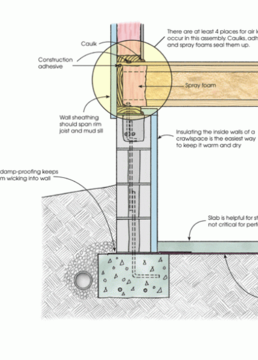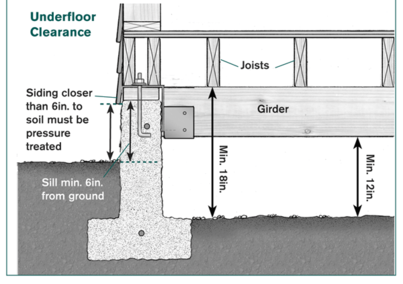 Many building experts recommend against crawl spaces because they have the water problems of a basement with almost none of the storage space, at much higher cost than a slab.
Many building experts recommend against crawl spaces because they have the water problems of a basement with almost none of the storage space, at much higher cost than a slab.
Still, sometimes a crawl space makes sense. Crawl space walls should be insulated with rigid foam or closed-cell spray polyurethane foam, and should be sealed rather than vented.
Crawl spaces should be treated as if they were miniature basements, which is exactly what they are. The best current practice is to make a crawl space a conditioned area like the rest of the house. This is permitted by newer versions of most building codes, and is much better for the house and residents.
CRAWL SPACES ARE LIKE MINI BASEMENTS
If you don’t need the subterranean living space, you can save money on excavation and foundation walls. Crawl spaces should be sealed, insulated, and passively kept warm if mechanical equipment, ducts and plumbing are left there. A crawl space is less likely to have moisture problems if the crawl space floor is higher than the exterior grade.
THE CODE
The International Residential Code permits residential crawl spaces to be sealed, as long as the requirements of section R408.3 (Unvented crawl space) are followed
Section N1102.2.8 covers requirements for crawl space wall insulation
Although the illustration shows a crawl space with a below-grade floor, a better designed crawl space has a floor that is several inches higher than the exterior grade.

